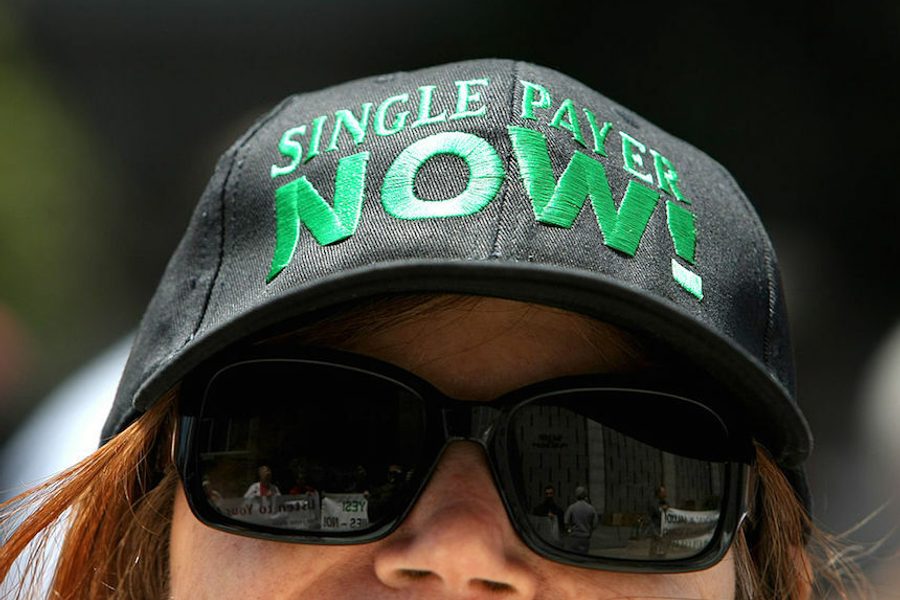
The Affordable Care Act (ACA) and millions of its beneficiaries are safe, for now, from the GOP’s congressional death panels. The healthcare fight is just getting started. In March, Bernie Sanders said he would introduce a “Medicare-for-all single-payer” bill in the Senate.
The next big healthcare showdown, however, is shaping up in California. On one side, the Democratic legislature; on the other, it seems, is Jerry Brown, the Democratic governor.
On February 17, Democratic state Sens. Ricardo Lara and Toni Atkins introduced the Healthy California Act, legislation that would establish a single-payer plan for all 38 million residents, including undocumented citizens. “Everyone has a right to healthcare,” said Lara, when announcing the legislation. “We’ll never get to 100 percent healthcare in California unless we lead.”
California’s legislature passed similar bills in 2006 and 2008, both of which were vetoed by Gov. Arnold Schwarzenegger ®. With a Democrat back in the governor’s office, one might imagine the measure to be a done deal. But Brown, who supported single payer in 1992, is these days not so enthusiastic. Like many a Democratic official facing a base with rising expectations and ambitious demands, Brown has been handwringing about costs, effectively doing the Republicans’ work for them.
The upfront costs are a concern, but not an insurmountable barrier. The ACA, thankfully intact, provides California a financial launch pad. A significant part of the start-up costs would be funded through federal waivers for the ACA, as well as MediCal, the Children’s Health Insurance Program and Medicare.
On March 30, Lara released details about the single-payer plan. The state would negotiate prices for services and prescriptions with healthcare providers and pharmaceutical companies. All Californians would be required to participate in the program.
Other states have also tried — and failed — to pass single payer. Colorado voters rejected a single-payer ballot measure last November, thanks to public fears about costs — fears stoked by the insurance industry, the state GOP, business groups and Gov. John Hickenlooper (D). In 2014 in Vermont, the milquetoast Gov. Peter Shumlin (D) abandoned a singlepayer plan passed in the legislature because, as he put it, “the potential economic disruption and risks would be too great.”
California will find more inspiration up in America’s attic. In 1947 in Saskatchewan, Premier Tommy Douglas of the Co-operative Commonwealth Federation (CCF), a democratic socialist party, established the embryo of Canada’s single-payer healthcare system. The idea spread from province to province, and it was instituted nationwide in 1984.
California may not have Douglas’ CCF, but it has RoseAnn DeMoro’s California Nurses Association, with its 100,000 members, and it has Our Revolution, the activist offshoot of the Sanders campaign, which in California is 400,000 strong. Both organizations plan to mobilize in support of the bill.
Sanders’ proposal is not likely to pass in the current Congress. But it may provide the boost of political will needed for California progressives to change Jerry Brown’s mind. And it puts his congressional colleagues on notice: Single payer will be an issue in the 2018 midterm elections.
Joel Bleifuss, a former director of the Peace Studies Program at the University of Missouri-Columbia, is the editor & publisher of In These Times, where he has worked since October 1986.









